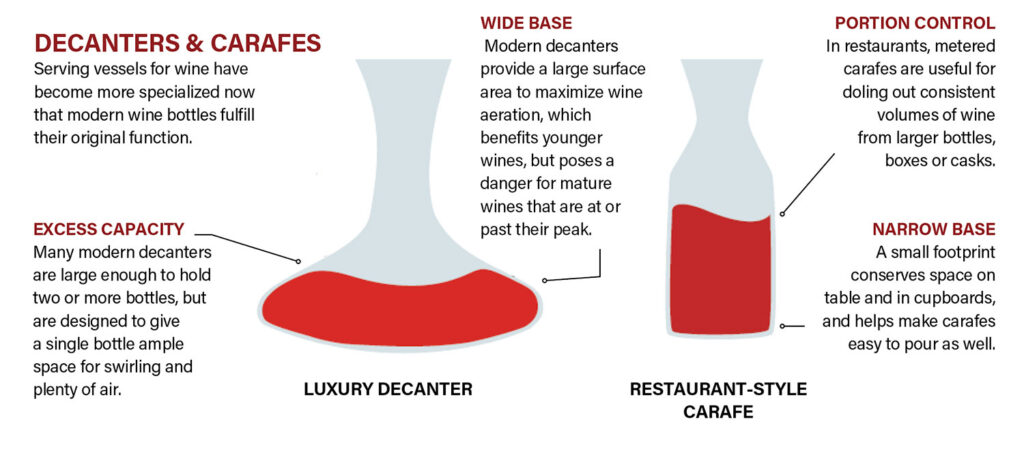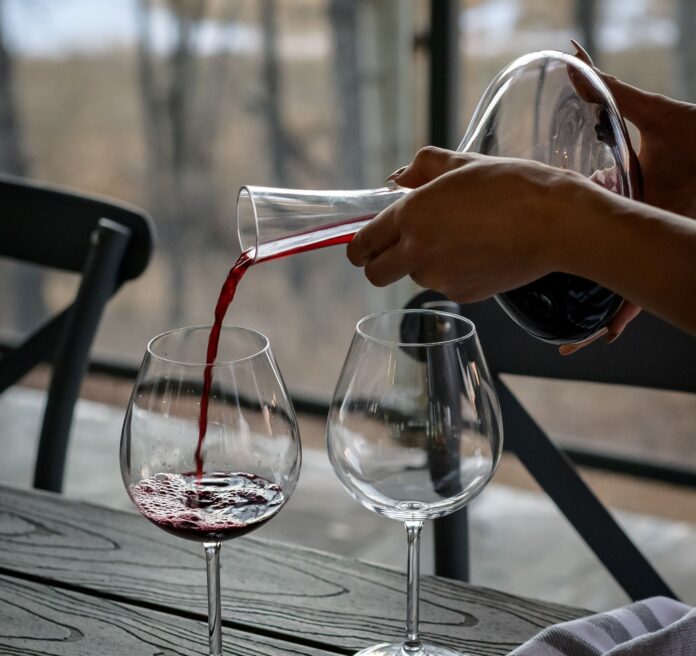Decanters have long been used to make wine look pretty, or to control its temperature, but improving flavor by decanting is a relatively recent phenomenon. It raises the question: Why do we decant certain wines?
Historically, decanters were filled from barrels in order to bring wine to the table. However, the decanter was largely rendered obsolete when wine began to be sold from the winery in bottles rather than casks.

For most of the 20th century, there remained only two possible reasons for transferring a wine from its original package into a separate serving vessel. At fancy restaurants and luxurious dinners — where mature, high-end red wines were served — pouring wines gently off of sediments they develop (after ten or more years of aging) into a decanter allowed all people to partake in clean, bright wine without the last person getting a cloudy glass. In modest restaurants and taverns, using more practical carafes for wine service allowed for portion control when drawing wine from larger, bulk-sized bottles, boxes or casks.
However, now that fine wines are increasingly consumed earlier in their evolution, the practice of decanting has evolved around an entirely new goal: helping younger wines taste more mature by helping them to “breathe,” or aerate.
Aeration is only beneficial for high-quality wines that have yet to reach their peak, so premium red wines and dessert wines are decanted more often than other styles. How long a wine should breathe for maximum benefit depends on the resilience of the wine in question, and is a topic subject to spirited debate even among experts. In practice, though, very few wines are concentrated enough to taste appreciably better after more than an hour or two in a decanter.
Feature photo by Theme Photos on Unsplash.
Marnie Old is one of the country’s leading wine educators. Formerly the director of wine studies for Manhattan’s French Culinary Institute, she currently serves as director of vinlightenment for Boisset Collection and is best known for her visually engaging books published by DK: the award-winning infographic Wine: A Tasting Course for beginners and the tongue-in-cheek He Said Beer, She Said Wine. Read her recent piece, How to Read Wine Maps Historically.






